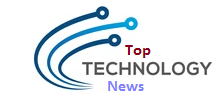Choosing the best Content Management System (CMS) for a media company is a critical decision that impacts everything from editorial workflow to audience engagement and monetization. A generic CMS won’t cut it. Media organizations need platforms that can handle high traffic, manage complex content types, and publish seamlessly across a variety of channels. In 2024, the market is primarily divided between traditional monolithic systems and the more flexible, modern headless CMS approach.
1. WordPress: The Accessible Giant 🐘
WordPress continues to be a top contender due to its immense popularity and flexibility. While it started as a blogging tool, its vast ecosystem of plugins and themes has transformed it into a powerful platform capable of handling the needs of many media companies. It’s especially appealing for its user-friendly interface, which allows editors and journalists to publish content with a minimal learning curve.
Key Advantages:
- Ease of Use: The intuitive dashboard makes it simple for content teams to create and publish articles, images, and videos.
- Vast Plugin Ecosystem: The sheer number of plugins available means you can add almost any functionality you need, from advanced SEO tools to paywalls, ad management, and intricate content scheduling.
- Cost-Effective: The core software is free and open-source, making it an affordable starting point. You’ll primarily pay for hosting and any premium themes or plugins.
- Scalability: For large, high-traffic media sites, managed hosting solutions like WordPress VIP provide the necessary enterprise-level security and performance to handle millions of visitors.
Drawbacks: While powerful, WordPress can become slow and unwieldy if not properly optimized. It’s a frequent target for hackers due to its popularity, requiring a strong focus on security.
2. Drupal: The Secure, Scalable Powerhouse
Drupal is a favorite among large-scale media organizations, government institutions, and complex web projects. Its reputation is built on its robust security, advanced content organization, and exceptional scalability.
Key Advantages:
- Enterprise-Grade Security: Drupal has a dedicated security team and is widely regarded as one of the best CMS for media companies platforms. This is a critical factor for media companies that handle sensitive data.
- Advanced Content Management: It excels at managing complex content taxonomies and custom data structures. You can create intricate relationships between different types of content, which is perfect for building rich, interconnected news portals.
- High Performance: Drupal is engineered to handle large volumes of content and significant traffic spikes with a more streamlined code structure than WordPress.
- Multilingual Support: It offers strong built-in features for publishing in multiple languages, making it a great choice for global media outlets.
Drawbacks: Drupal has a much steeper learning curve than WordPress and is more developer-centric. Setting up and customizing a Drupal site often requires a skilled team of developers, leading to higher initial costs.
3. Headless CMS: The Flexible Future 🤖
A headless CMS is a game-changer for modern media companies. It separates the content repository (the “body”) from the frontend presentation layer (the “head”). Content is stored in a central hub and delivered via APIs to any device or channel, including websites, mobile apps, smart devices, and social media. This “content as a service” model offers unparalleled flexibility.
Top Headless CMS options:
- Contentful: Known for its user-friendly interface and robust API, Contentful allows media companies to easily structure and distribute content across multiple platforms.
- Quintype: Built specifically for news publishers, Quintype offers a complete all-in-one platform with features for rich editing, monetization, and audience analytics.
- Arc XP: Developed by The Washington Post, this enterprise-grade platform is designed for large newsrooms, offering advanced tools for content personalization and audience engagement.
- Sanity: This platform is known for its real-time collaboration features and flexible content schemas, allowing teams to build highly customized editorial workflows.
Key Advantages:
- Omnichannel Publishing: Content can be created once and published everywhere, which is a massive efficiency boost for media companies that operate across a multitude of platforms.
- Enhanced Performance: Decoupling the front and backends allows for faster loading times and better performance, as the presentation layer can be built using the latest lightweight frameworks.
- Future-Proofing: A headless CMS allows you to adapt to new technologies and devices without a complete platform migration, ensuring your content infrastructure remains relevant for years to come.
Drawbacks: While powerful, a headless CMS is more complex to set up. It requires a dedicated development team to build the front end and can have higher initial setup costs compared to simpler, all-in-one solutions.
The Verdict: Choosing the Right CMS
The best CMS for your media company depends on your specific needs.
- For smaller to medium-sized blogs and publishers looking for a user-friendly, cost-effective solution with a massive community, WordPress is the clear winner. Its versatility and ease of use are hard to beat.
- For large, enterprise-level news organizations that prioritize security, scalability, and complex content relationships, Drupal is the most powerful choice. It requires a significant investment in development but offers a robust, secure, and highly customizable platform.
- For media companies focused on omnichannel distribution and future-proofing their content, a headless CMS is a strategic investment. It provides the flexibility to deliver content to any platform, giving you a competitive edge in today’s multi-device world.

